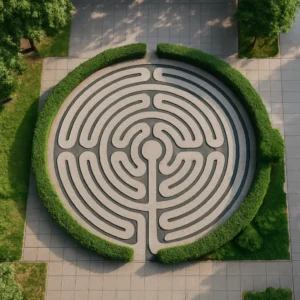The skyline of every major city tells a story, and few elements in that story are as iconic as the skyscraper. From the first steel-framed towers of the late 19th century to today’s glass giants that stretch into the clouds, skyscrapers are more than architectural feats—they are symbols of economic power, technological progress, and the relentless growth of urban life. The evolution of skyscrapers is deeply connected to the history of urbanization and reflects how cities have adapted to population increases, economic shifts, and modern living demands.
The Birth of Skyscrapers
The concept of building upward rather than outward began in the late 1800s in the United States. As cities like Chicago and New York experienced rapid population growth and economic expansion, the need for commercial space within limited land areas became urgent. The solution came with the development of steel-frame construction and the invention of the elevator, which made it possible to build taller and safer structures.
The Home Insurance Building in Chicago, completed in 1885, is widely regarded as the first modern skyscraper. Standing at ten stories high, it was revolutionary at the time. Soon after, other cities embraced the trend, and taller, more elaborate towers began to reshape urban landscapes.
The Skyscraper Boom of the Early 20th Century
The early 20th century witnessed a boom in skyscraper construction, particularly in New York City. Iconic buildings like the Chrysler Building, the Empire State Building, and the Woolworth Building were constructed during this period. These towers were not only practical solutions to spatial limitations but also statements of ambition and modernity.
Architecturally, this era saw the rise of Art Deco design, which combined elegance with the technological optimism of the age. Skyscrapers became symbols of corporate power and national pride, often featured in films, literature, and art as representations of progress.
As cities grew, skyscrapers became essential in accommodating the increasing number of workers, businesses, and residents. They contributed to the economic vitality of urban centers and allowed cities to expand upward instead of spreading endlessly outward.
Technological Advancements and Changing Designs
As technology advanced, so did skyscraper construction techniques. The development of lightweight steel frames, curtain wall systems, and reinforced concrete allowed buildings to reach new heights. By the mid-20th century, the International Style became popular, characterized by minimalism, clean lines, and extensive use of glass and steel.
The construction of the World Trade Center towers in the 1970s pushed engineering limits further, demonstrating how skyscrapers could dominate skylines and shape a city’s identity. However, this period also raised concerns about urban density, environmental impact, and the loss of human-scale public spaces.
In recent decades, innovations in sustainable architecture have led to the rise of “green skyscrapers.” These modern buildings incorporate energy-efficient systems, recycled materials, and eco-friendly designs. Projects like the Shanghai Tower, the Burj Khalifa, and One World Trade Center reflect how skyscrapers continue to evolve in response to environmental and social needs.
Skyscrapers and the Process of Urbanization
The evolution of skyscrapers is closely tied to the process of urbanization. As rural populations migrated to cities in search of economic opportunities, urban areas became increasingly crowded. Skyscrapers offered a vertical solution to the challenge of limited space.
By concentrating offices, residences, and commercial spaces within a single structure, skyscrapers supported the economic and social infrastructure of growing cities. They allowed more people to live and work in central urban areas, reducing the need for long commutes and encouraging the development of efficient public transportation systems.
Furthermore, skyscrapers helped define urban identity. Cities like New York, Dubai, Hong Kong, and Shanghai are instantly recognizable by their skylines, which reflect not only architectural trends but also economic strength and cultural aspirations.
The Social and Cultural Impact of Skyscrapers
Beyond their practical function, skyscrapers have a profound social and cultural impact. They are often seen as symbols of ambition, innovation, and economic power. Their presence can attract businesses, tourists, and investors, contributing to a city’s global reputation.
However, skyscrapers also raise questions about urban inequality and accessibility. While many serve as homes and offices for thousands of people, others are exclusive spaces reserved for the wealthy elite. The challenge for urban planners is to ensure that these towering structures benefit the broader community rather than only a privileged few.
In recent years, the conversation around skyscrapers has shifted to include discussions about sustainability, livability, and community engagement. Architects and city planners are exploring ways to make tall buildings more integrated into the urban fabric, with green spaces, public areas, and pedestrian-friendly surroundings.
What Skyscrapers Teach Us About Cities
The story of skyscrapers is ultimately the story of human ingenuity and adaptation. These towering structures represent how cities respond to the challenges and opportunities of growth. They are monuments to technological progress, economic ambition, and cultural identity.
Yet, as cities continue to evolve, skyscrapers remind us that urban development must balance innovation with sustainability and community needs. Their history teaches us that architecture is not just about building higher but about shaping spaces that enhance urban life.
As we look to the future, skyscrapers will likely continue to rise—but hopefully with a renewed focus on their impact not only on the skyline but also on the people who live and work beneath them.







